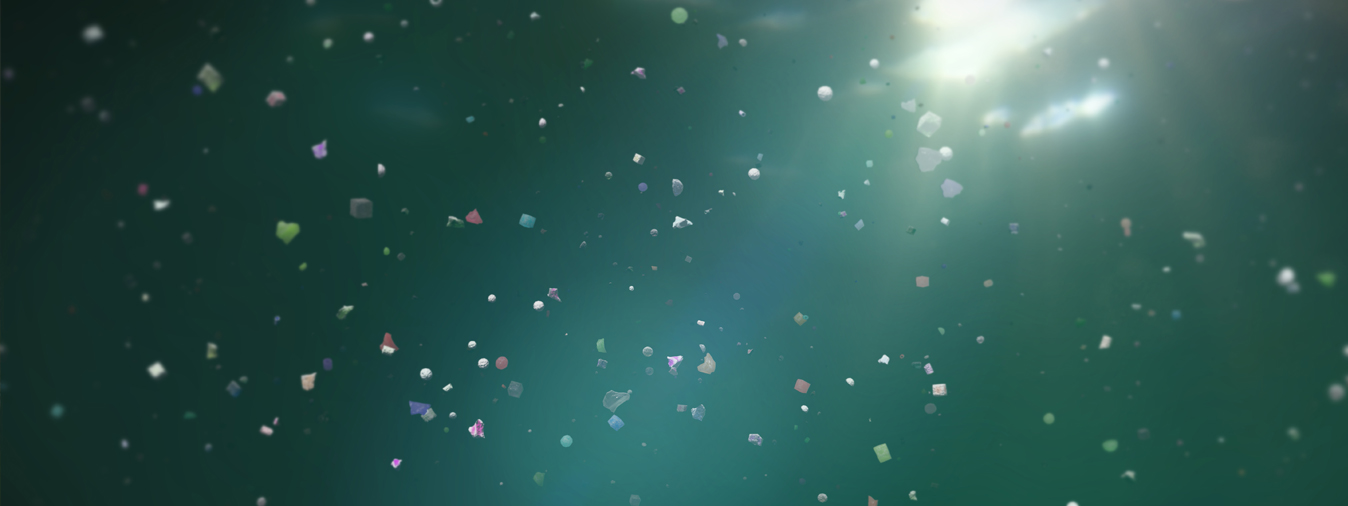
What are microplastics and where do they come from?
The use of plastics is widespread in modern life and the impacts of this on the natural environment are well documented. With plastics being found in all of the earth's oceans - from the coasts and beaches right down to the deepest depths.
Large items littering the coasts and oceans are easy to spot, but there are smaller pieces too.
So small in fact, that they can be spread by winds, waves and currents. They may be more difficult to see but can still have a big impact on the health of animals and humans and the environment.
Microplastics is the term used for the smaller sized group of plastics - tiny pieces 0.05mm to 5mm long (Andrady, 2011).
Some of these pieces may have been originally produced at this size (known as primary microplastics) while others are fragments of larger items, broken down over time (secondary microplastics).
Microplastics are tiny pieces of plastic 0.05mm to 5mm long.
Share on
Where do microplastics come from?
Microplastics enter the environment from lots of different sources.
You’ve probably heard of some of them already - microbeads from cosmetics and beauty products (one shower alone sending up to 100,000 beads down our drains) - but there are some that you might not have:
- Industrial scrubbers used for abrasive blast cleaning
- Plastic pellets – small pieces of plastic used as the raw material to produce most of our plastic products (often called nurdles/mermaid tears)
There are even more sources of secondary microplastics as they are produced from breakdown and weathering by natural processes of larger plastic materials including:
- Breakdown of larger plastic items such as bottles and carrier bags
- Fibres released from synthetic textiles during washing
- Rubber particles released from the wear of tyres on roads

Why should we care?
Microplastics build up in the marine environment, as land-based sources ultimately flow into the oceans.
These particles are consumed by birds and animals and settle on beaches or the seabed, impacting on both the animals (who eat them) and the habitats they live in. Microplastics can also bind with other harmful chemicals before being ingested, causing further harm.
These plastics have been detected in many marine organisms from tiny plankton to whales. They can block digestive tracts, reduce the urge to feed and alter feeding behaviours, all of which reduce growth and reproductive output and, in some animals, may lead to starvation.
As they are ingested by marine species, microplastics are now found in commercial seafood and shellfish.
A study published in 2011 found that 85% of the langoustine caught in the Clyde Estuary had plastic in their gut (Murray and Cowie, 2011). Microplastics have a route into the human food chain and are also found in some drinking water sources.
Research into the impacts of microplastics on human health is still at an early stage but there are possible impacts on hormones and major organs.
Microplastics are now found in commercial seafood and shellfish.
Share on
What can we do about microplastics?
Although the impact on human health isn’t fully understood yet, we know that while plastics continue to enter the system their potential to impact will increase.
The most important step is to reduce plastics entering the environment. In 2018, the manufacture and sale of rinse-off personal care products containing microbeads were banned in Scotland.
If you want to get involved, then you can help record where these pellets are found by carrying out a nurdle hunt.
We can also make changes to activities in our own homes to reduce the release of microplastics. How we wash our clothes can help avoid releasing microfibres like potentially washing less often, keeping our washes at lower temperatures and avoiding tumble drying.
